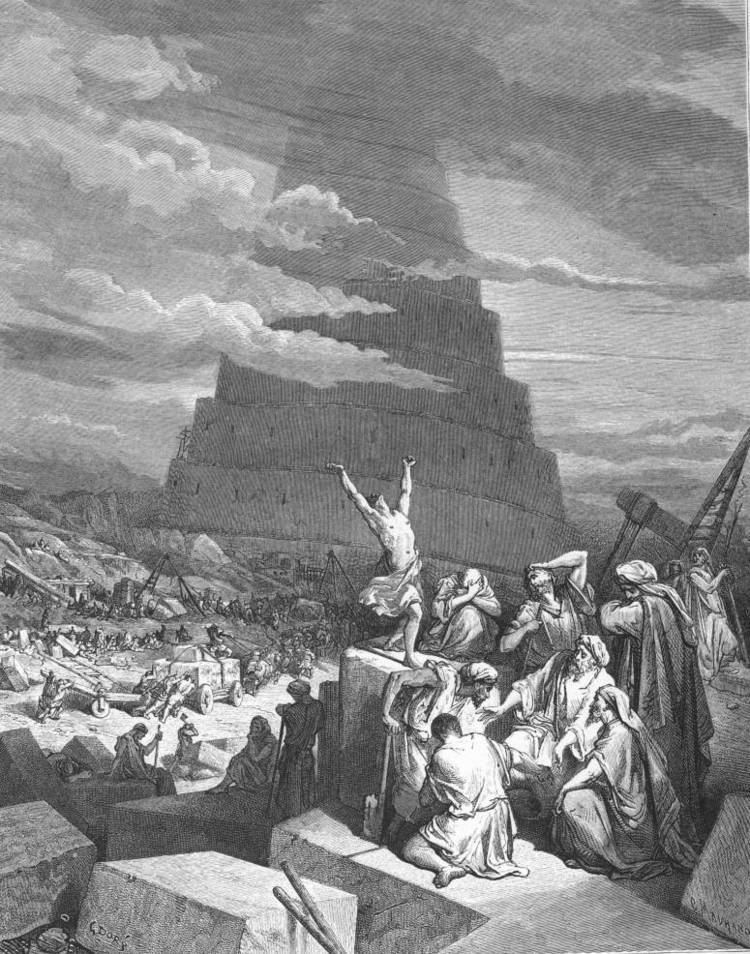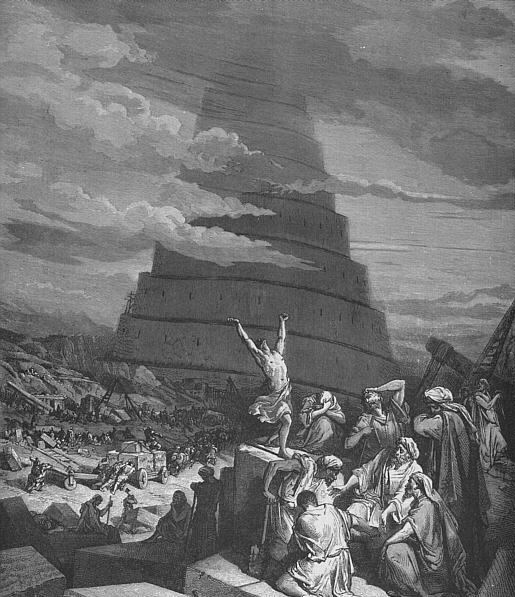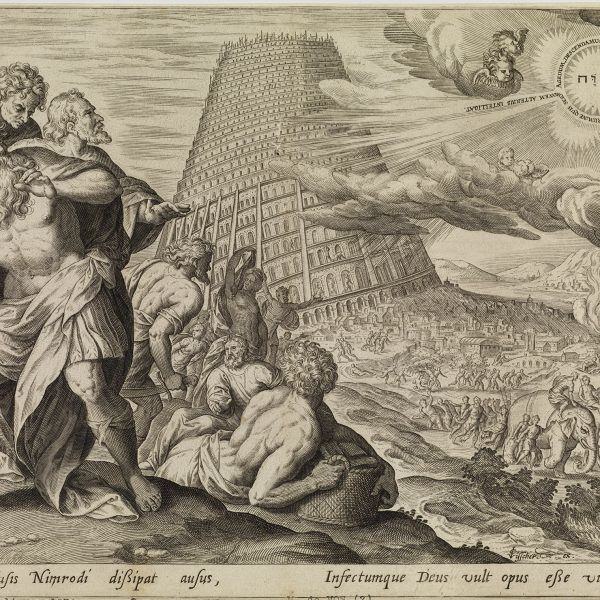 | ||
Cormorant confusion of tongues
The confusion of tongues (confusio linguarum) is the origin myth for the fragmentation of human languages described in the Book of Genesis 11:1–9, as a result of the construction of the Tower of Babel.
Contents
- Cormorant confusion of tongues
- Evidence for confusion of tongues
- Biblical account
- Subsequent interpretation
- References

Evidence for confusion of tongues
Biblical account

It is implied that prior to the event, humanity spoke a single language, either identical to or derived from the "Adamic language" spoken by Adam and Eve in Paradise. In the confusion of tongues, this language was split into seventy or seventy-two dialects, depending on tradition. This has sometimes been interpreted as being in contradiction to Genesis 10:5,

Subsequent interpretation
During the Middle Ages, the Hebrew language was widely considered the language used by God to address Adam in Paradise, and by Adam as lawgiver (the Adamic language) by various Jewish, Christian, and Muslim scholastics. Dante in the Divina commedia implies however that the language of Paradise was different from later Hebrew by saying that Adam addressed God as I rather than El.
Before the acceptance of the Indo-European language family, these languages were considered to be "Japhetite" by some authors (e.g. Rasmus Rask in 1815; see Indo-European studies). Beginning in Renaissance Europe, priority over Hebrew was claimed for the alleged Japhetic languages, which were supposedly never corrupted because their speakers had not participated in the construction of the Tower of Babel. Among the candidates for a living descendant of the Adamic language were: Gaelic (see Auraicept na n-Éces); Tuscan (Giovanni Battista Gelli, 1542, Piero Francesco Giambullari, 1564); Dutch (Goropius Becanus, 1569, Abraham Mylius, 1612); Swedish (Olaus Rudbeck, 1675); German (Georg Philipp Harsdörffer, 1641, Schottel, 1641). The Swedish physician Andreas Kempe wrote a satirical tract in 1688, where he made fun of the contest between the European nationalists to claim their native tongue as the Adamic language. Caricaturing the attempts by the Swede Olaus Rudbeck to pronounce Swedish the original language of mankind, Kempe wrote a scathing parody where Adam spoke Danish, God spoke Swedish, and the serpent French.
The primacy of Hebrew was still defended by some authors until the emergence of modern linguistics in the second half of the 18th century, e.g. by Pierre Besnier (1648–1705) in A philosophicall essay for the reunion of the languages, or, the art of knowing all by the mastery of one (1675) and by Gottfried Hensel (1687-1767) in his Synopsis Universae Philologiae (1741).
